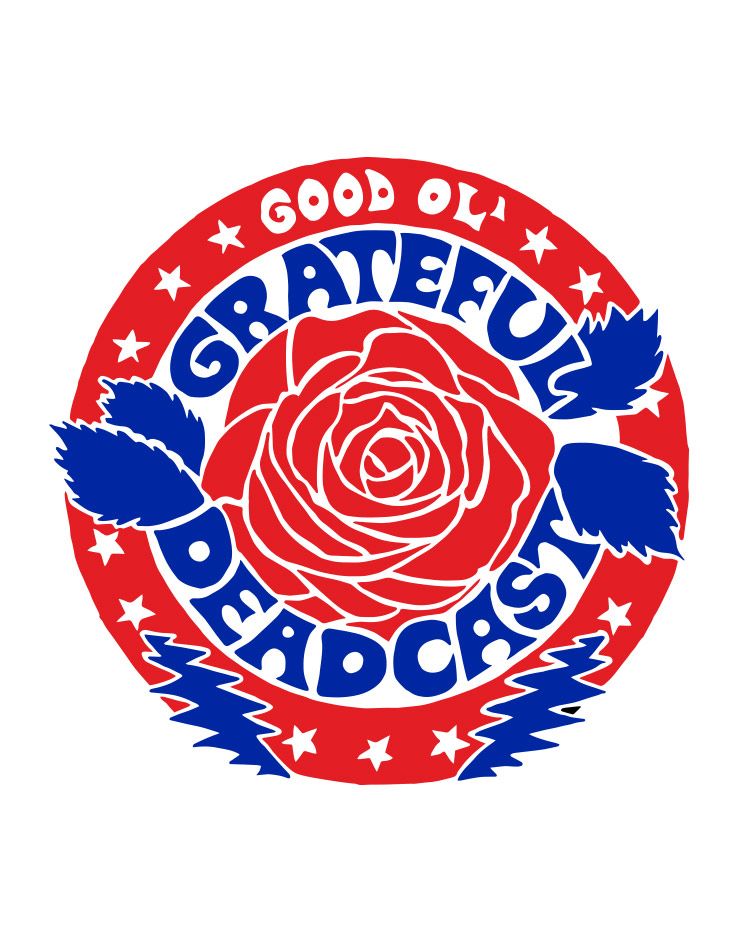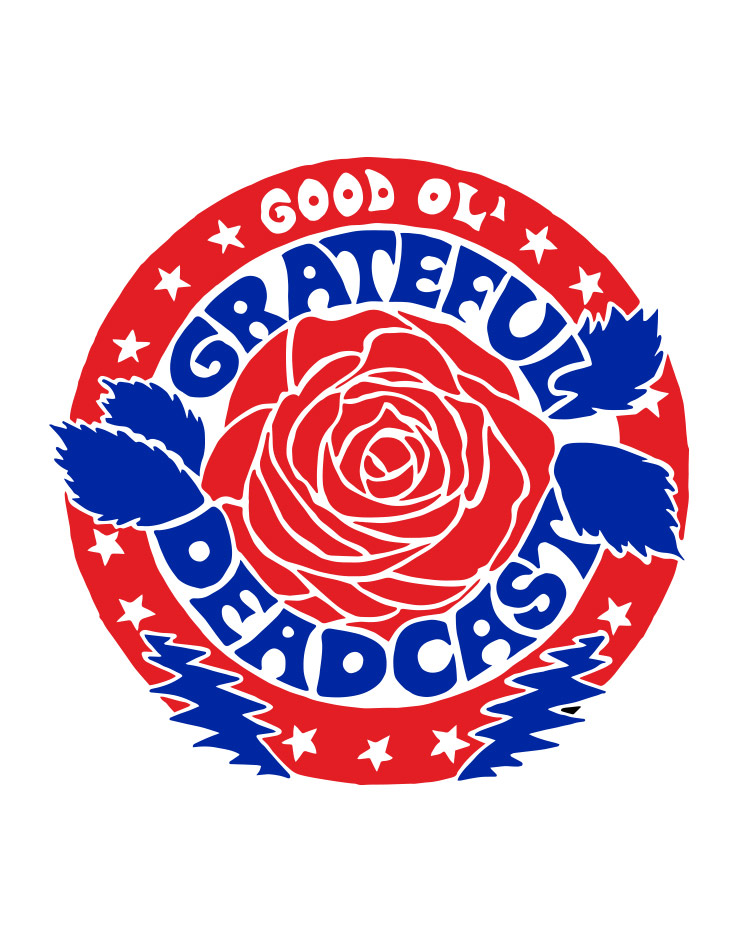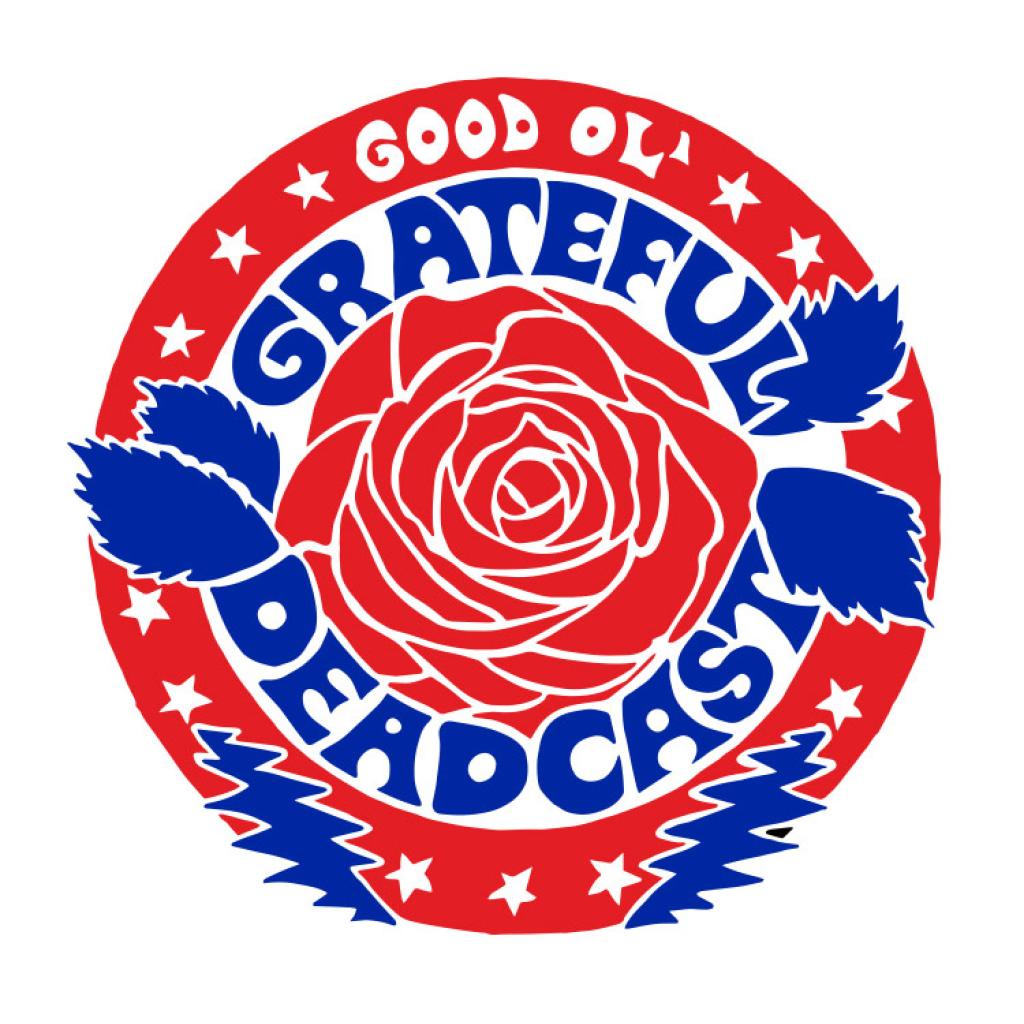Our close listen to the Grateful Dead’s remastered Workingman’s Dead 50th anniversary edition continues with “Dire Wolf.” Album co-producer Bob Matthews reveals recording tricks. With David Nelson of the New Riders of the Purple Sage, we get a look inside Jerry Garcia’s living room as he learns how to play pedal steel guitar. We untangle the connections between “Dire Wolf,” the Zodiac Killer, and Sherlock Holmes to figure out the exact date the song was written, examine session outtakes from the Angel’s Share, hear from bluegrass phenom and Dead fan Billy Strings, discuss how “Dire Wolf” is only one of many connections between the Dead and Game of Thrones writer George RR Martin, and debut a "Dire Wolf" supercut.


Dire Wolf supplementary notes
By Jesse Jarnow
Origins
Around the time the Grateful Dead started to play “Dire Wolf,” the still-unidentified Zodiac Killer was loose in San Francisco. The song’s jaunty “don’t murder me” chorus would become a mantra for Jerry Garcia when he stopped his car late at night at stoplights, and surely served a similar function for other Bay Area Dead freaks lucky enough to hear early versions of the song before the band recorded it for Workingman’s Dead in the early 1970. Garcia would dedicate one version (at Winterland in October) to “the Zodiac cat.”
But “Dire Wolf” predated the Zodiac Killer’s arrival in the Bay Area’s consciousness, and was inspired initially by a slightly more classical source: Sherlock Holmes.
It all started one evening when Robert Hunter and Jerry Garcia were home watching television, specifically the 1959 version of The Hound of the Baskervilles, with Peter Cushing as Sherlock Holmes. Recalled Robert Hunter in his online journal in 1996, “We were speculating on what the ghostly hound might turn out to be.”
Somebody, possibly Mountain Girl, suggested that it might be a dire wolf.
Hunter wrote, “We thought Dire Wolves were great big beasts. Extinct now, it turns out they were quite small and ran in packs. But the idea of a great big wolf named Dire was enough to trigger a lyric.”
Then Hunter dreamt the song. The next morning, he told Steve Silberman, “I woke up and grabbed a pencil before I was entirely awake and wrote the whole song down. I think I managed to capture the quality of the dream by writing it down before I was wide awake.”
He continued, “I remember giving Jerry the lyrics for ‘Dire Wolf" while he was noodling on guitar, watching television. He took them and placed them aside without looking at them, continued watching TV. I said ‘I don't live here because of your sweet temper, it's to write songs!’ Somewhat startled at the vehemence of the statement, he picked up the page and got right to work setting it. The old boy often needed jump-starting.”
The song was done by that afternoon, and debuted onstage by the Grateful Dead on June 7, 1969 at the Fillmore West.
According to the San Francisco Examiner archives, The Hound of the Baskervilles aired on Bay Area television exactly twice in the spring of 1969, May 25th and May 31st. On the 31st, the Dead were in the northwest, playing McArthur Court in Eugene, which means that it might well have been on Sunday evening May 25th, 1969, that Garcia, Hunter, and Mountain Girl found themselves watching the 9:30 showing of The Hound of Baskervilles on Channel 2 -- and on Monday, May 26th, when Hunter woke up with words and Garcia wrote some music, and “Dire Wolf” came into existence.
Fennario
The mythical land of Fennario appears most famously in Bob Dylan’s version of “Pretty Peggy-O,” on his 1962 debut, and the version performed by the Grateful Dead starting in 1973. The song itself is a Scottish ballad that migrated across the Atlantic to the southern Appalaichans, but Fennario seems to be an American invention, first sung by Mrs. Margaret Combs Green of Knott County, Kentucky and transcribed in 1908 by Katherine Jackson French, the pioneering song collector. Before that, Peggy-O lived “down by the banks of the Ivy-O,” as in the earliest American version, published in 1880.
George RR Martin and the Dire Wolves
As some might know, “dire wolves” appear throughout George RR Martin’s Game of Thrones, both the original novels and the popular HBO series. But the connections between George RR Martin and the Grateful Dead run way deeper, and started more than a dozen years before the first Game of Thrones book was even published.
George RR Martin’s fourth book, published in 1983, was called The Armageddon Rag, about a pair of brutal murders connected to a fictional rock band formed in the ‘60s called The Nazgul. Along with other bands, the Dead played an influence on the book, but it got even deeper the next when Phil DeGuere optioned the book for a movie. DeGuere was one of the filmmakers behind Sunshine Daydream, the now-beloved then-bootlegged concert film from 1972, and DeGuere hired a group of familiar musicians, including Robert Hunter, Merl Saunders, Quicksilver Messenger Service’s John Cippollina to write music for the Nazgul. The Armageddon Rag movie never got made, but the soundtrack did, in circulation among tape collectors.
Also mentioned, Jeffrey Alexander’s Dire Wolves (Just Exactly Perfect Sisters Band) can be heard here.
Dire Wolf Supercut
In addition to entering American popular mythology, “Dire Wolf” was an important part of the Grateful Dead’s repertoire for almost their entire career from the moment it was introduced. It was shelved very briefly during and immediately following the band’s mid-’70s road hiatus, but returned to the stage in full-force by 1977 and never left. But “Dire Wolf” wasn’t a jam vehicle. In some ways, it barely changed at all -- an intro verse, two bridge verses, a solo, and an outro verse, never going over 4 minutes in length.
Because of that, it’s the perfect way to hear how the sound of the band changed radically over those years -- Mickey Hart leaves and comes back, Donna Jean Godchaux arrives and departs, the tempo and guitar tones change, as does the band’s attack.
Thanks to Rich Mahan for editing together this mega-”Dire Wolf” that begins with its first performance in 1969 and ends with its last in 1995, arranged chronologically into one performance. Here’s the full list:
June 7, 1969 Fillmore West, San Francisco, CA
June 27, 1969 Veterans Auditorium, Santa Rosa, CA
December 12, 1969 Thelma, Los Angeles, CA
May 2, 1970 Harpur College, Binghamton, NY
December 23, 1970 Winterland, San Francisco, CA
April 27, 1971 Fillmore East, New York, NY
May 24, 1972 Lyceum, London, UK
December 19, 1973 Curtis Hixon Convention Hall, Miami, FL
August 5, 1974 Philadelphia Civic Arena, Philadelphia, PA
October 29, 1977 Field House, Northern Illinois University, DeKalb, IL
July 5, 1978 Omaha Civic Auditorium, Omaha, NE
December 26, 1979 Oakland Auditorium Arena, Oakland, CA
October 11, 1980 Warfield Theater, San Francisco, CA
September 11, 1983 Santa Fe Downs, Santa Fe, NM
October 25, 1985 The Sportatorium, Pembroke Pines, FL
March 24, 1986 The Spectrum, Philadelphia, PA
May 2, 1987 Frost Amphitheatre, Palo Alto, CA
September 19, 1988 Madison Square Garden, New York, NY
February 12, 1989 The Forum, Los Angeles, CA
March 30, 1990 Nassau Coliseum, Uniondale, NY
September 25, 1991 Boston Garden, Boston, MA
May 24, 1992 Shoreline Amphitheater, Mountain View, CA
May 27, 1993 Cal Expo, Sacramento, CA
October 3, 1994 Boston Garden, Boston, MA
July 2, 1995 Deer Creek Amphitheater, Noblesville, IN
Comment
Loving the podcast
This episode was another very interesting listen. I've become a fan, you guys do a great job. I do have 2 comments though. One, I was hoping you had spent some time discussing the acoustic versions of DW from 1980. And secondly, and this applies to all the episodes, why don't you play the entire song at the end of the episode, After all that time listening to outtakes, highlights and live snippets, it would be good to hear the entire finished product. I'm guessing it's a rights issue? Just some thoughts. Please keep it going. Looking forward to the American Beauty breakdown.
Great Editing
Thanks Rich for this great progression of a fun song. I was actually thinking of presenting to SXM a progression of St Stephen to play on 12/26, but got lazy before the holidays and never did it.
Jerry on Pedal Steel
When David Lemieux was talking about Jerry's distinctive pedal steel playing, it took me back to a day a few years ago, washing dishes in Vermont, feeling no pain, and listening to a random shuffle on my computer. At some point I was grooving along to a pedal steel break, thinking, "I love Jerry's phrasing!" Then the song ended and I realized, "Wait a minute! That wasn't Jerry!" Or was it?
The song was "So Begins the Task" from Stephen Stills on that amazing first Manassas album, and I listened to it again and felt even more certain it was Jerry! So I did some online sleuthing and finally found one site that said this was an uncredited Jerry performance before the regular pedal player (Al Perkins, maybe?) caught up with the band.
Since then, I listen to that song quite a lot, and it's amazing to me how Jerry's phrasing is so recognizable even on another instrument. Lately I'm thinking that it reminds me of his work on "The Wheel" in places. But it was where he led me in that trippy dishwashing moment that was unmistakably Jerry!




Thanks Rich for this great progression of a fun song. I was actually thinking of presenting to SXM a progression of St Stephen to play on 12/26, but got lazy before the holidays and never did it.
When David Lemieux was talking about Jerry's distinctive pedal steel playing, it took me back to a day a few years ago, washing dishes in Vermont, feeling no pain, and listening to a random shuffle on my computer. At some point I was grooving along to a pedal steel break, thinking, "I love Jerry's phrasing!" Then the song ended and I realized, "Wait a minute! That wasn't Jerry!" Or was it?
The song was "So Begins the Task" from Stephen Stills on that amazing first Manassas album, and I listened to it again and felt even more certain it was Jerry! So I did some online sleuthing and finally found one site that said this was an uncredited Jerry performance before the regular pedal player (Al Perkins, maybe?) caught up with the band.
Since then, I listen to that song quite a lot, and it's amazing to me how Jerry's phrasing is so recognizable even on another instrument. Lately I'm thinking that it reminds me of his work on "The Wheel" in places. But it was where he led me in that trippy dishwashing moment that was unmistakably Jerry!
This episode was another very interesting listen. I've become a fan, you guys do a great job. I do have 2 comments though. One, I was hoping you had spent some time discussing the acoustic versions of DW from 1980. And secondly, and this applies to all the episodes, why don't you play the entire song at the end of the episode, After all that time listening to outtakes, highlights and live snippets, it would be good to hear the entire finished product. I'm guessing it's a rights issue? Just some thoughts. Please keep it going. Looking forward to the American Beauty breakdown.